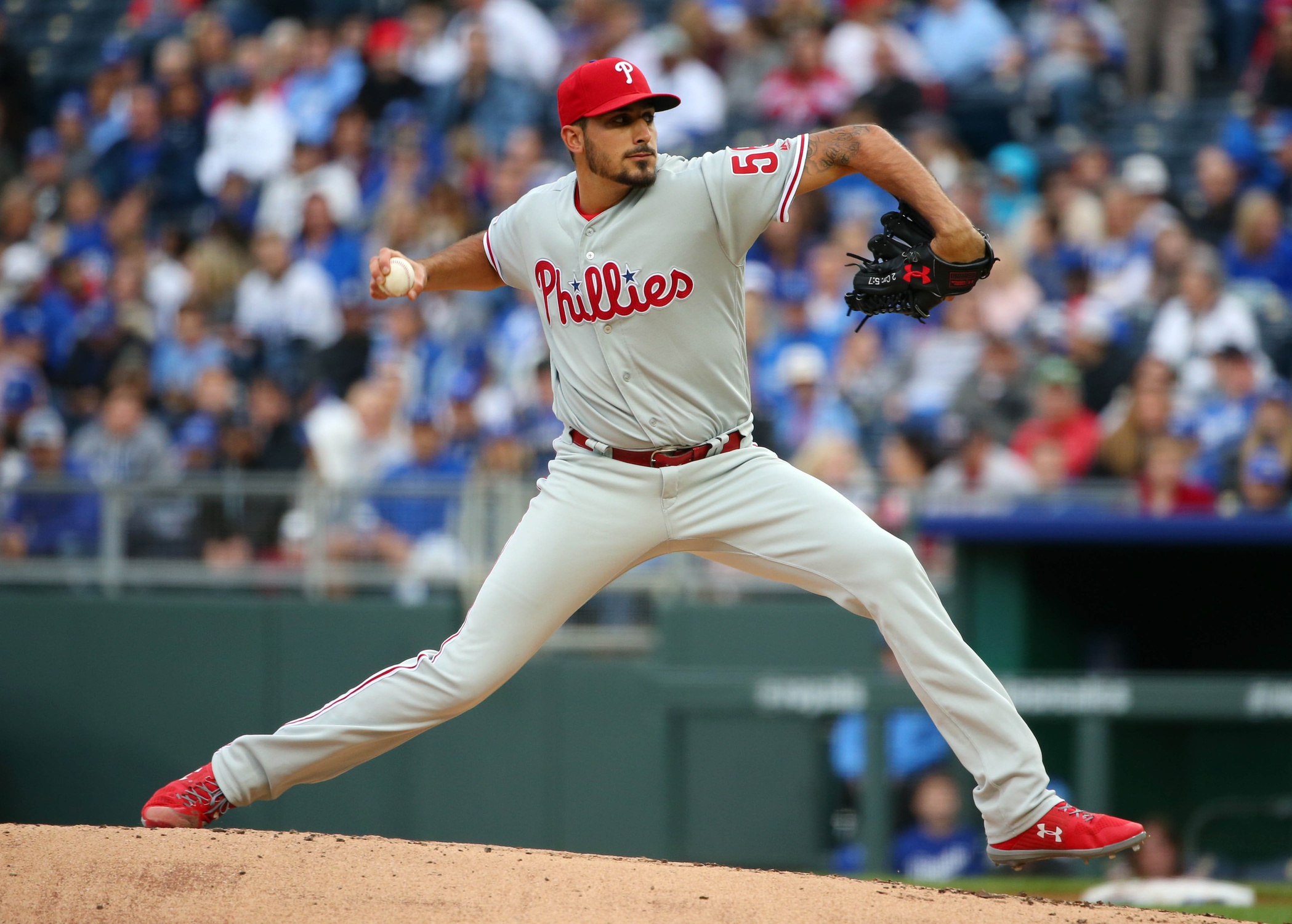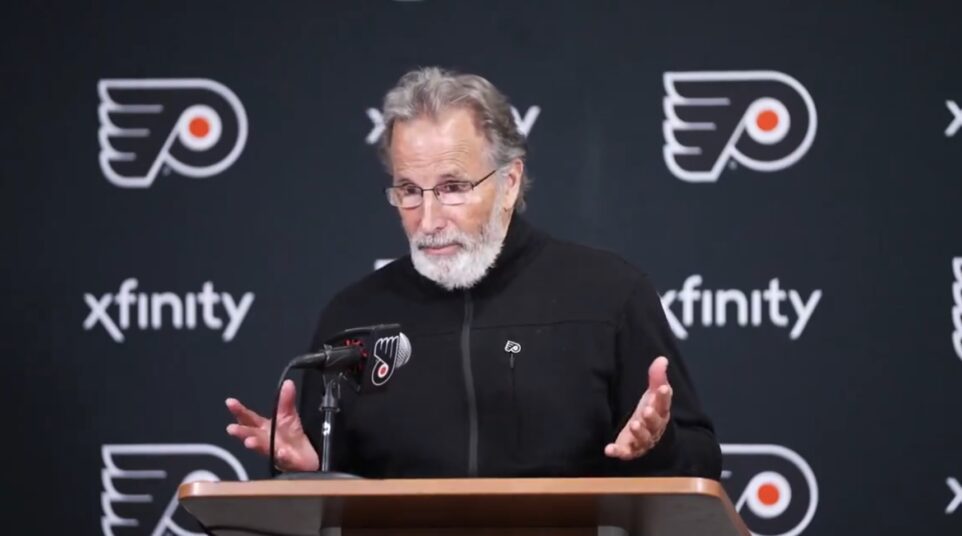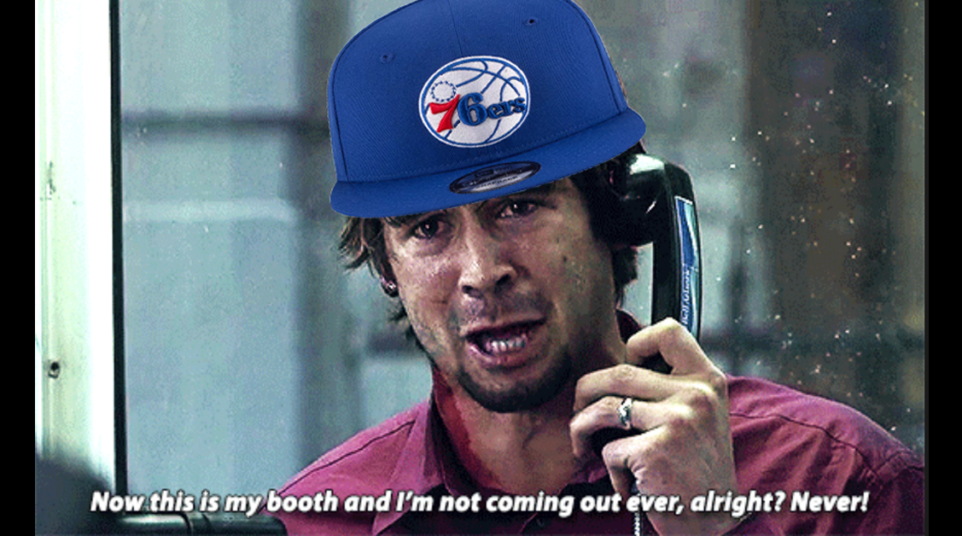
What Should We Make of Zach Eflin's Dominant Stretch?
Zach Eflin. So hot right now. Just a total masterpiece turned in by this guy last night against a sneaky competent Kansas City lineup that entered the game right in the middle of the pack in terms of runs scored, slugging-percentage, and OPS. It’s hard to watch such an efficient and aggressive performance like this one and not get excited, or maybe even a little carried away.
Is this for real? Is Zach Eflin a potential all-star?
He faced only four hitters over the minimum, dominating Royals hitters on his way to earning a second complete game in his last three starts. He used a heavy fastball and sinker to generate 16 outs via ground balls, including two double plays, while also striking out seven. Among those strikeouts was this one of Hunter Dozier that served as an exclamation point on Eflin’s night:
What we’re seeing right now from the 25-year-old right-hander is impressive, but his recent run is not without precedent. From June 5 through July 3 of last season, Eflin pitched to a 1.91 ERA and 0.93 WHIP, while holding opponents to a .213 BAA and .556 OPS over six starts. He was one of the NL’s best starting pitchers in several major statistical categories such as WHIP, ERA, OPP SLG%, FIP, and wOBA allowed during that time frame. He was simply phenomenal…and then he wasn’t.
Eflin followed that torrid six-game stretch by allowing a 5.53 ERA, .293 BAA, 1.49 WHIP and .854 OPS over his next eight starts. According to FanGraphs, his hard-hit% jumped from 19.2% over that six-game stretch I referenced to 35.2% over the following eight starts, which why this recent run, as it encouraging as it has been, needs to be accompanied with some caution.
Check out Eflin’s numbers over his last three starts: 25 IP, 0.72 ERA, .179 BAA, 0.68 WHIP, and a .442 OPS allowed to opposing hitters.
That’s outstanding. Forget that the three starts have come against the Marlins, a depleted Nationals lineup, and the Royals. Dominance is dominance, and this stretch is noteworthy, regardless of competition. That said, if you’re expecting this show to become the new norm, well, don’t. Simply put, no pitcher can sustain this type of production and to expect such of him would be wildly unfair. The real task for Eflin should be avoiding the swift and steep regression he experienced last season. Can he? Time will tell, but what we know right now is that Eflin has been elite in a few specific ways this season, and it’s not unrealistic to think he can keep it up.
FanGraphs has his 27.9% hard-hit percentage as the sixth-lowest among MLB starting pitchers this season, a big reason he’s been successful despite a relatively low 6.71 K/9. He’s also not walking opposing batters. His 1.24 BB/9 is the second-lowest among all starters. Those numbers are reason for optimism. Yes, teams will put the ball in play against him, but by limiting free passes and generating consistently weak to medium contact, there’s reason to believe Eflin can remain reasonably successful moving forward.
Of course, there’s some reason for pause, too. The .259 BABIP he has allowed to this point is the NL’s 12th lowest, and his 86% left on base percentage is the seventh-best among MLB starting pitchers. Yeah, that can be partly explained by saying he makes his best pitches when he needs to, but luck is often an element often attributed to both BABIP and LOB%. Say that LOB% dips to even 75%, which is still very good, and that’s going to have the potential to create a marked negative impact in his numbers, as would an uptick in opponents BABIP.
Speaking of luck, this brings us to FIP, a metric that attempts to remove luck and BABIP from the equation. It has been an oft-criticized metric around these parts in recent seasons (what’s up, Tommy Hunter?), but one the Phillies baseball people definitely give some consideration. Eflin’s 3.92 FIP is stellar but also considerably lower than his 2.47 ERA. Generally, such a gap is a sign of future regression –but not always. It’s true that FIP generally reflects more kindly for strikeout pitchers, which Eflin is not. At the same time, it also reflects more favorably for pitchers who limit walks, which Eflin does, and so while I don’t obsess over this particular metric even when there’s a notable disparity in actual versus expected run prevention, it’s worth mentioning because there have been previous stretches in Eflin’s career when his results have far outweighed the expectations, only to see things later balance out.
I guess what I’m saying is this: Eflin has been outstanding and has a chance to continue to make competitive starts for the Phillies in the coming months. If you’re a Phillies fan, you should feel good about having a quality arm in the middle of this rotation that’s going to give this team a chance to win on most nights. Do that without expecting this absolute stretch of dominance to continue, and you should be just fine.





